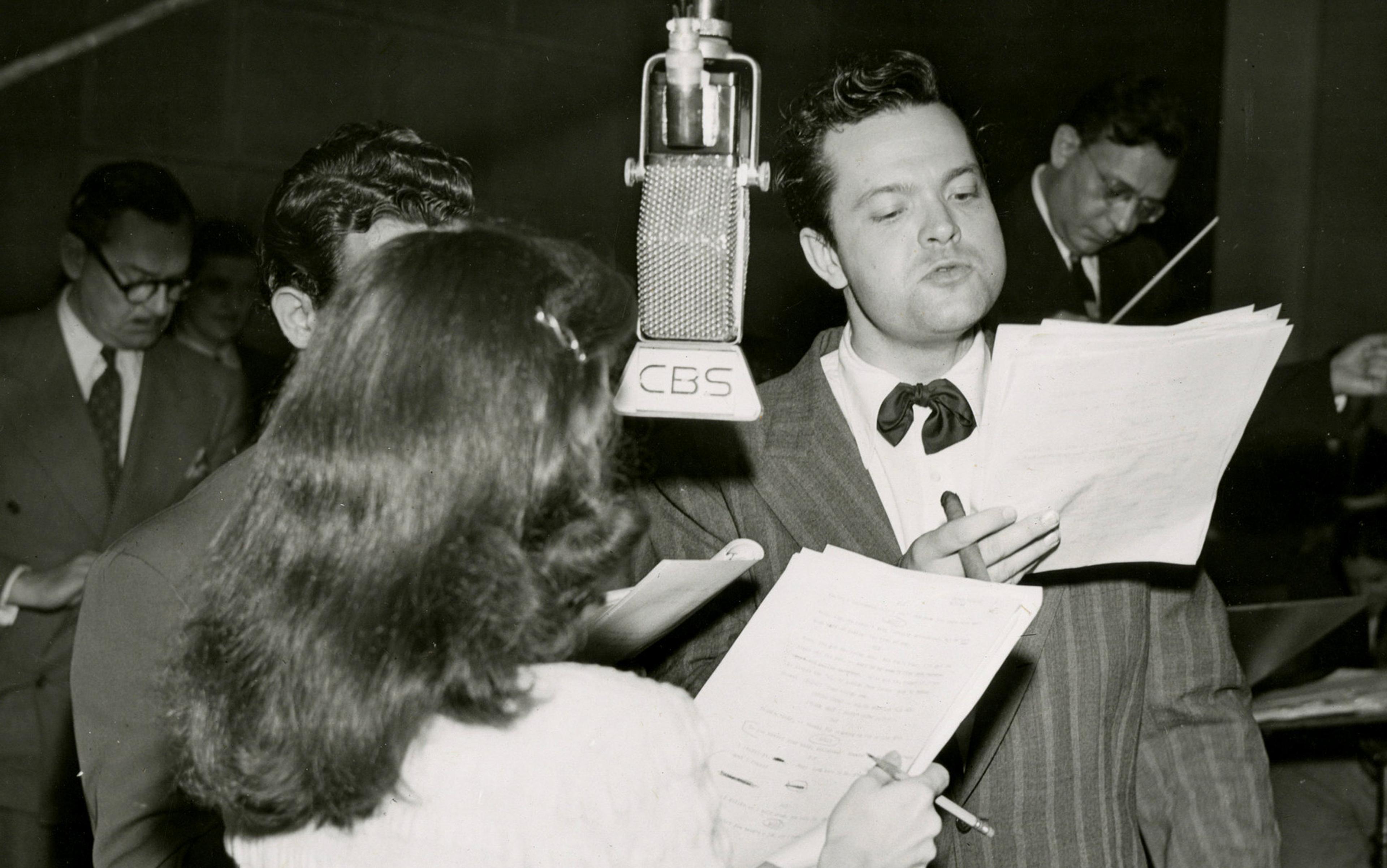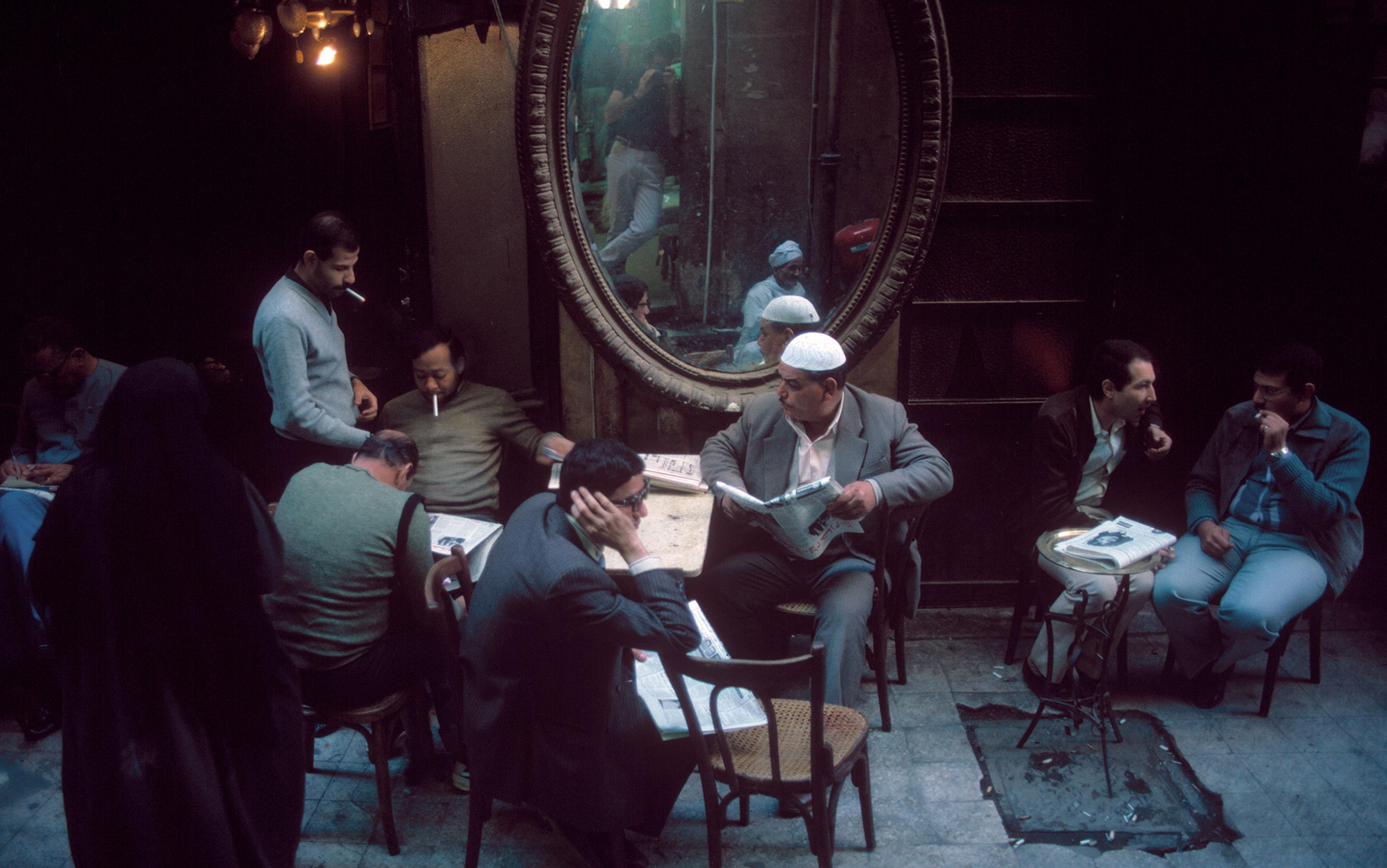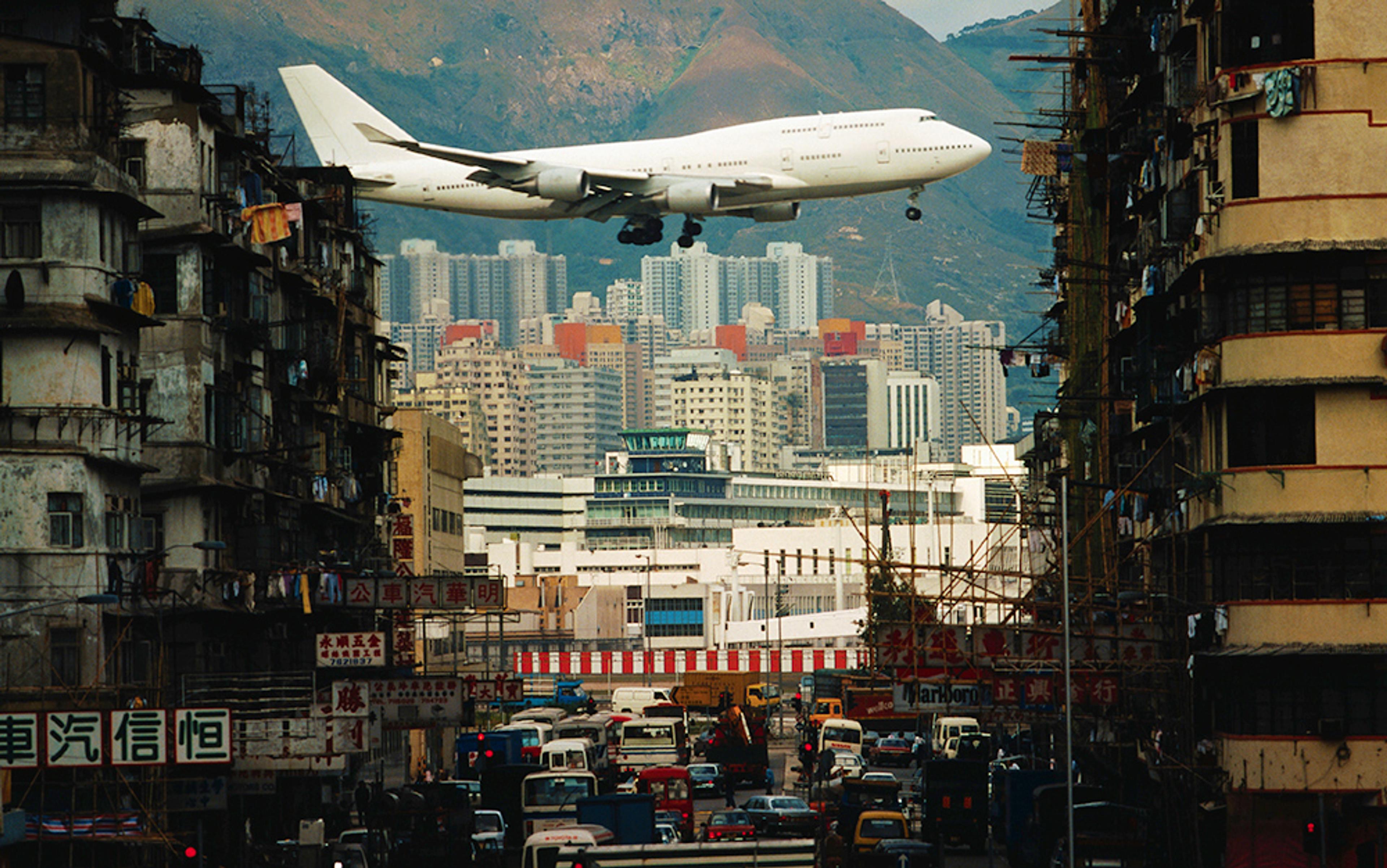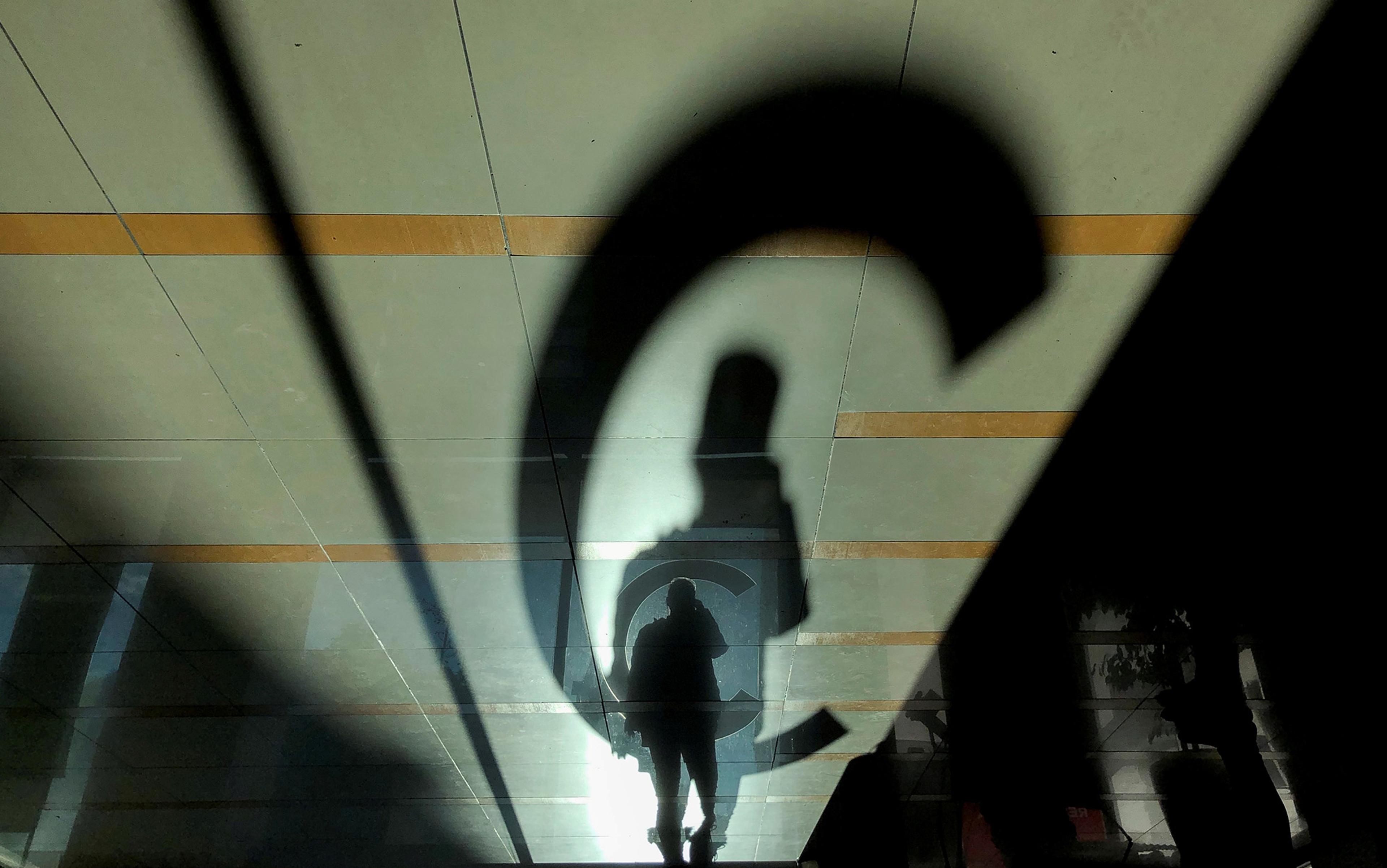Just past 8pm on 30 October 1938, a 20-year-old college student named Robbins turned on his car radio. He was driving a friend towards their campus in New Jersey after a visit to a women’s college. Ramón Raquello and his Orchestra were beaming in from the Meridian Room in New York via CBS. Suddenly, the music broke off, and an announcer delivered a special bulletin – scientists had observed several incandescent gas explosions on Mars. The music returned, but soon there was a new interruption – an interview with a noted astronomer who dismissed as coincidence the fact that a large meteor had landed in New Jersey soon after the explosions were noted. Robbins thought he was still listening to a music programme when the bulletins placed the meteor on a farm 22 miles from where he was headed. But as Robbins would soon hear, it was no meteor.
Instead, a New Jersey town had been invaded by a race of Martians bent on systematically destroying everything in their path. At least 40 people had died when the meteor revealed itself to be a Martian ship containing extraterrestrials capable of shooting heat rays. Various voices of authority took to the radio; a brigadier general named Montgomery Smith even said he put several counties under martial law and closed the very road to Trenton that Robbins was travelling on at the time.
Robbins pulled off at a drugstore on the side of the highway. There were four people there, and he told them what was happening. He tried to call his family, but the lines were busy. As the other shoppers began to panic, he and his friend decided to return to the women’s college to rescue his friend’s girlfriend. But she was in no danger. According to legend, Robbins and more than a million other Americans had been panicked by a radio play – Orson Welles’s infamous adaptation of H G Wells’s novel The War of the Worlds (1898).
The panic didn’t end that night. The broadcast has become an origin story of fake news and technological anxiety in the United States, and its tentacled aliens watch when we talk of fake news today. Then, as now, the worry over whether the news can be believed was a proxy for something else entirely – fear of the new technologies that brought it. Scholars have convincingly questioned the scale of the 1938 panic. Everybody loves a good story – especially the newspapers threatened by radio news, the social scientists seeking a claim to relevance, and Welles, great ham that he was. Firsthand accounts attest that some listeners did panic, but many more did not. Why, then, did millions more find the panic so easy to believe these past 80 years?
To understand the 1938 broadcast from the perspective of our new fake-news moment, we have to understand the play’s true meaning. The journey of those murderous Martians in the US began well before that Halloween eve, with the popular pseudoscientific understanding of radio itself. Reproduced sounds have always had an uncanny presence in US life. The reaction of Scientific American to the invention of the phonograph was to exclaim that it would allow the living to hear the voices of the dead. Sure enough, some people began to record their voices before they died so that they could speak at their own funerals, and a Washington Post column wondered if radio itself could pick up vibrations from the dead, according to the sound historian Jonathan Sterne’s book The Audible Past (2003). One of the earliest understandings of radio, writes the cultural historian Jeffrey Sconce in Haunted Media (2000), was that aliens might already be using it to attempt contact with humans.
The moment that print ceded position to radio might be 1936, when US incumbent President Franklin Delano Roosevelt secured reelection despite a fierce shellacking in print: 80 per cent of the press rejected the president only to watch him win in an almost vindictive landslide. ‘Election day 1936 was judgment day for America’s daily press,’ wrote The Christian Century after his victory in a letter to newspaper publishers. ‘When people voted, they voted against you.’
Radio seemed like a miracle, but it was powerful, too. The medium promised a more participatory democracy – one where common people could listen in on the momentous events of their day. That meant a better-educated society, all the more equipped to fight the rising tide of fascism. ‘If the future of our democracy depends upon the intelligence and cooperation of its citizens,’ wrote James Harbord, president of the Radio Corporation of America, in 1929, ‘radio may contribute to its success more than any other single influence.’ As early as 1924, the US commissioner of education, John Tigert, prophesied that, after ‘the school, the library, and the newspaper’, radio was the fourth most important education agency in the nation. Many claimed that radio might usher in a new enlightenment.
In Germany, it would come to look more like a dark age. Under the auspices of Joseph Goebbels, Hitler’s unprecedented propaganda machine used that education agency towards totalitarian ends. ‘The German radio under National Socialist auspices must become the clearest and most direct instrument for educating and restructuring the German nation,’ wrote Goebbels in 1933. Social scientists in the US studied radio in order to ensure that it would be used for good and not ill. The social scientists Hadley Cantril (who would later write the War of the Worlds study that cemented its legend) and Gordon Allport wrote The Psychology of Radio (1935), which analysed the effects of radio on listeners. ‘Radio is an altogether novel medium of communication, preeminent as a means of social control and epochal in its influence upon the mental horizons of men,’ they wrote. Their book was simultaneously a scientifically certified account of radio’s power and evidence of social scientists’ growing interest in using radio to study the American mass mind.
Any conversation about radio’s potential was also a conversation about how Americans listened
In short, by the 1930s, radio had become more trusted than newspapers. Part of the reason was its unique intimacy, and its ability to put you in the centre of an unfolding event without a reporting gap; craven newspapermen could insert their own slant, it appeared, but radio could not. The trust placed in radio also came from the trueness of the sounds it reproduced.
Any conversation about radio’s potential was also a conversation about how Americans listened – and the degree to which radio could persuade them that what they heard was real. ‘Radio has already given sound a wide currency, and sound “effects” are taking the place once enjoyed by sound itself,’ wrote E B White in Harper’s Magazine in 1938. ‘In sufficient accumulation, radio sounds and television sights might become more familiar to us than their originals,’ rendering the solid world make-believe.
This kind of make-believe was the goal for some. The pressure on the networks to prove their social value inspired a CBS studio engineer named Irving Reis to propose a new sort of programme in 1936. He went to the vice-president of programming at CBS and pitched a drama series that would produce high-quality experimental dramas seeking to show the public how new technology could make them believe a story. In July 1936, with a budget of $400 a week, the network launched the Columbia Workshop.
‘In the five centuries that bridge the year since Gutenberg invented moveable type and gave the world the store of man’s knowledge through the printed word,’ the inaugural broadcast of the show exclaimed, ‘no discovery has promised greater potentialities for shaping the world’s culture than the slim … path of the electric wave.’ In that first broadcast of the Columbia Workshop, the announcer declared that the show dedicated itself to ‘familiarising you with the story behind radio … and to experiment in new techniques with the hope of discovering or evolving new and better forms of radio presentation, with a special emphasis on radio drama.’ The influential Columbia Workshop presented stories both on and about radio; broadcasts often combined inventive sound-effects work with pseudoscientific demonstrations of how the effects were achieved. The US, born as an experiment, now led the experiment in radio – and listeners were taught to think of themselves as subjects in the new science.
The popular image of Reis was that of a mad scientist – Popular Mechanics described how, rather than ordinary auditions, Reis had actors’ voices measured by a bit of gadgetry called a resonoscope to assess the ‘pitch and tone qualities’ of their voice. The Workshop broadcasts projected the image of restless experiment, too. The first broadcast presented two plays recorded in different ways – one in a studio, and the other on a stage where actors were tracked with a parabolic microphone. Here we learned that more than 80 per cent of listeners preferred the parabolic microphone, because ‘allowing the artist freedom of movement enhanced the illusion of dramatic reality’. During such demonstrations, the listener was implicitly the focus of the experiment – the Workshop was testing not so much what radio could do as what it could do to the listener, a matter at once of science and art.
On 11 April 1937, the Workshop’s ceaseless experimentation yielded its most daring presentation to date: The Fall of the City by the Pulitzer Prize-winning poet Archibald MacLeish. Concerned about mounting tensions overseas, MacLeish became interested in radio as a means of mobilising the public for the defence of liberty. He had reason to worry. In the mid-1930s, the Germans had started broadcasting propaganda to Latin America via short-wave radio. These broadcasts were part of the German use of propaganda, in Hitler’s words, to ‘destroy the enemy from within, to conquer him through himself’. Once again, the risk was listeners who might believe anything they heard on the radio. The Workshop was MacLeish’s best vehicle to stump for liberty and democracy; and, true to the series, the play was in part about radio itself.
The Fall of the City redefined radio drama. All of the action takes place in a town square filled with 10,000 people anticipating an invasion. To make his crowd of 200 extras sound larger, Reis placed speakers in the hall that played back recordings of the crowd. Goebbels had pioneered a similar technique at Hitler’s rallies. As with reports on Hitler, a radio announcer narrated MacLeish’s play. ‘The Announcer is the most useful dramatic personage since the Greek Chorus,’ declared MacLeish in the play’s written introduction. A 21-year-old Welles played the part.
‘The people invent their oppressors,’ Welles announces. ‘They wish to believe in them’
As the play ensues, a dead woman rises from her grave to prophesise a coming Conqueror. She and a series of messengers speak to the citizens gathered in the town square – one of radio’s favourite imagined spaces for congregating the listening population. The citizens learn that the Conqueror’s tactics are those of the propagandist: he conquers by convincing his victims that he is their saviour, and vanquishes his foes before they even attempt resistance.
Various orators try to convince the townspeople that ‘reason and truth’ can defeat the Conqueror, but panic erupts. When the Conqueror finally arrives, the crowd cowers. And only then does the announcer sees that under his helmet is literally nothing – an empty suit of armour. ‘The people invent their oppressors,’ Welles announces. ‘They wish to believe in them.’
MacLeish, in side notation, expanded more: ‘The ear is already half poet. It believes at once: creates and believes.’ But if the ear created and believed at once and the people created their own oppressors, then the wrong kind of radio was a perfect conqueror.
The play was a smash success, and gained the Columbia Workshop broader attention. But more than a year later, MacLeish worried still about whether the people could hear the truth, so on 27 October 1938 he released his second Workshop production to an increasingly radio-aware world. It, too, was about an invasion of sorts.
Air Raid concerns a small town whose inhabitants refuse to believe they’re targets of war. Once again, an announcer begins the play by foregrounding the mystical, hypnotic medium of radio – ‘Ladies and gentlemen: you have only one thought tonight all of you. You who … finger the button on the dashboard dial until the metal trembles like a medium in a trance and tells you what is happening in France or China or in Spain or some such country … Will there be war?’
Where Fall was about the danger of imaginations run wild with words, Air Raid is about people who have chosen to ignore disturbing words – ‘All that noise to tell us there’s a war,’ a townswoman says in response to a warning of the coming planes.
The planes, of course, do come – and when they approach, they are heard before they are seen, hidden from sight by the Sun, and arriving finally as metal in the air: ‘You’d say there were no men,’ the announcer reports. ‘You’d say they had no will but the will of motor on metal.’ They annihilate the town. This time, the fallen people didn’t listen carefully enough.
The Sunday after Air Raid broadcast, a New York Times article headlined ‘Radio Challenges Playwrights To Try New Tricks’ summed up MacLeish’s latest drama: ‘The American radio audience has never had such a horrifying experience.’ That would not be the case for long. Under the headline, in a set of pictures, there was a smaller photo of Welles holding a sheaf of papers and looking away from the camera at something unseen. The caption read: ‘Mercury Theatre players huddle around Orson Welles on WABC’s stage … tonight’s show is War of the Worlds, by H G Wells.’ Welles, too, had heard Air Raid that week. He’d thought it sounded appealingly real.
That Sunday night at 8pm, the Mercury Theatre on the Air – a network mate and close associate of the Workshop – broadcast War of the Worlds. The show was an hour long but, when most recall it, they think of the first 40 minutes. These are its disorienting legacy, a collapsing set of narrative frames that intersect, interrupt and alarm. It would come to be taken as a demonstration of radio’s power to overwhelm unwitting minds. According to David Goodman, author of Radio’s Civic Ambition (2011), War of the Worlds was a radio play about the intelligence of the listening audience; from the start, it was ‘a radio play about listening to the radio’.
Welles opens the broadcast by reading a version of the book’s introduction as an unidentified narrator. ‘We know now that in the early years of the 20th century this world was being watched closely by intelligences greater than man’s and yet as mortal as his own,’ he intones. These intelligences, he recounts, studied humans as a human scientist studies the world.
Changes from book to radio are nuanced. Welles’s narrator says that ‘across an immense ethereal gulf, minds that are to our minds as ours are to the beasts in the jungle, intellects vast, cool and unsympathetic, regarded this Earth with envious eyes’.
One of Welles’s alterations in transitioning from novel to radio was changing the words ‘gulf of space’ to ‘ethereal gulf’.
‘Gulf of space’ was, if anything, less anachronistic than ‘ethereal gulf’. The alteration must have been made with another meaning in mind – ether, the popular term for the space in which radio waves travelled. In Welles’s broadcast, as with MacLeish’s, the invasion was a metaphor for listening to the radio. The intelligences studying us were radio’s own.
War of the Worlds is comprised of stories within stories, like the nested tales told by Scheherazade
Legend has it that, due to a bad segment on a more popular show in Welles’s timeslot, most audience members, like Robbins, tuned in after Welles’s more obviously fictional intro. What these latecomers would have heard was the news bulletins interspersed with enactments of the invasion itself.
But those bulletins provided the listener access to a world as foreign as Mars – the office of Welles’s Professor Pierson at Princeton University, who keeps in touch with an elite network of scientists while being interviewed by a nervous radio reporter, Carl Phillips. When Pierson and Phillips arrive at the farm where the meteor has landed, Phillips says: ‘I hardly know where to begin, to paint for you a word picture of the strange scene before my eyes, like something out of a modern Arabian Nights.’
The reference makes little sense, literally, other than connoting something fantastic. But it once again points to the broadcast’s self-awareness – War of the Worlds is comprised of stories within stories, like the nested tales told by Scheherazade. Phillips interviews Wilmuth the farmer about his discovery of the ‘meteor’. Wilmuth recounts his experience of the evening:
WILMUTH: I was listening to the radio and kinda drowsin’, that professor fellow was talkin’ about Mars, so I was half dozin’ and half … I was listening to the radio kind of halfways.
PHILLIPS: Yes, Mr Wilmuth, and then you saw something?
WILMUTH: Not first off: I heard something.
It was the meteor landing at Wilmuth’s farm, and the moment it did was the moment when the programme that Wilmuth had been listening to – the Professor’s account of the strange cosmic phenomena – materialised in his world. Then, Phillips and his radio apparatus came to his farm. Radio became physical, and Wilmuth was not a listener anymore, but a (soon-to-be-incinerated) participant. The story follows the same arc as Fall or Air Raid where word of an event suddenly becomes the event itself, heard before it’s seen. Listeners at home were at one with the listeners in the broadcast. Radio was becoming uncomfortably real.
As the Martians reveal themselves and cause mass devastation, the radio programming goes haywire – leading the listener through emergency broadcasts and the state militia’s defensive coordination. At the end, the announcer narrates a scene much like the panic that would be reported the next day:
I’m speaking from the roof of the Broadcasting Building, New York City. The bells you hear are ringing to warn the people to evacuate the city as the Martians approach … Avoid bridges to Long Island … hopelessly jammed … No more defences. Our army wiped out … Now the smoke’s spreading faster … it’s 50 feet.
There’s a thud, then silence. And the listener hears when the last voice in the segment asks: ‘Isn’t there anyone on the air? Isn’t there anyone …’ A listener might have felt alone were it not for the comment at the beginning of the play that ‘on this particular evening … the Crosley service estimated that 32 million people were listening in on radios.’ This was Welles’s tell – the sly reminder that, as citizens listened to their radios, radio scientists were listening to them. And in the anxious world of 1930s listening, a radio that knew your mind was a radio that could change it. The broadcast ended soon after. It had changed minds indeed.
In November, three days after the War of the Worlds broadcast, Dorothy Thompson, a syndicated columnist and radio reporter, published an oft-cited piece in response, entitled ‘Mr Welles and Mass Delusion’, in which she argued that the broadcast suggested American susceptibility to foreign propaganda:
All unwittingly Mr Orson Welles and the Mercury Theatre of the Air have made one of the most fascinating and important demonstrations of all time. They have proved that a few effective voices, accompanied by sound effects, can so convince masses of people of a totally unreasonable, completely fantastic proposition as to create nationwide panic … If people can be frightened out of their wits by mythical men from Mars, they can be frightened into fanaticism by the fears of Reds, or convinced that America is in the hands of 60 families, or aroused to revenge against any minority, or terrorised into subservience to leadership because of any imaginable menace.
Thompson referred to the broadcast as a ‘demonstration’, like an experiment. But this was not unwitting, as she said. The very idea of radio as an experiment, as the eerie voice that moulded – and revealed – your mind, was already on the air and in the press. It is what the broadcast was about. Before the play had finished airing, Welles had described the panic that would follow War of the Worlds for 80 years.
War of the Worlds transcends its time. ‘The panic broadcast… has been elaborated and exaggerated to serve a more important symbolic function for the culture at large,’ writes Sconce, the historian. Ever the trickster, Welles told versions of the story with zeal across his life. The hard facts of the night are hidden in the long shadow of his and our tall tale – War of the Worlds was a radio play about radio, and the panic legend is in part a story about its tellers.
‘The human voice is a more potent conveyor of emotion than is the printed page; it is less likely to appeal to reason,’ Thompson wrote in 1939. ‘From time immemorial it has been used to sway and control masses, and this possibility has been incalculably augmented by the radio and the power of reaching millions.’ A world threatened by dictators feared the machine that carried a voice; a dictator, 20th-century France scholar Alice Yaeger Kaplan reminds us in Reproductions of Banality (1986), is one who speaks.
Our loose equivalent to radio is the internet, and specifically social media. As radio turned reader to listener and changed a journalist’s ‘because I said so’ to an announcer’s ‘hear it for yourself’, so too did social media change modern journalism’s claims to truth. The new world is threatened by tribalism, and we tend to shunt news down silos of belief.
The new trajectory changed news from an informative tool to an expressive one, and upended older reader-journalist relationships that looked more like a student-teacher relationship, albeit one entered into by choice. Though readers could always share stories, social media propelled the act. Readers can share stories because they feel true, and lend those stories emotional rather than factual force.
This raises the possibility that even if somebody shares a piece of fake news, they might do so knowing its fake but believing it expresses something that, as Ralph Waldo Emerson put it all the way back in 1841, is ‘true for you in your private heart’. As with radio, the degree to which the new medium can effect us is a point of scientific interest – just think of the outcry surrounding the 2014 revelation that Facebook tinkered with over 600,000 users’ newsfeeds to test the influence of the platform on a user’s emotion. ‘To Facebook, we are all lab rats,’ began The New York Times’ recounting of the experiment. We’ve been there before.
There are plenty of reasons the fake news concern of today does not exactly parallel the War of the Worlds story – among them, the fact that a large part of the modern worry is the degree to which lone actors can create the illusion of legitimacy online. But as with War of the Worlds, any individual piece of fake news – like the false story that Pope Francis endorsed President Donald Trump – is not the only concern.
More than the news, we fear the technology that transmits it. The quintessential Martians are those ways of knowing that are enabled by our new machines, threatening to make the solid world make-believe once more.






